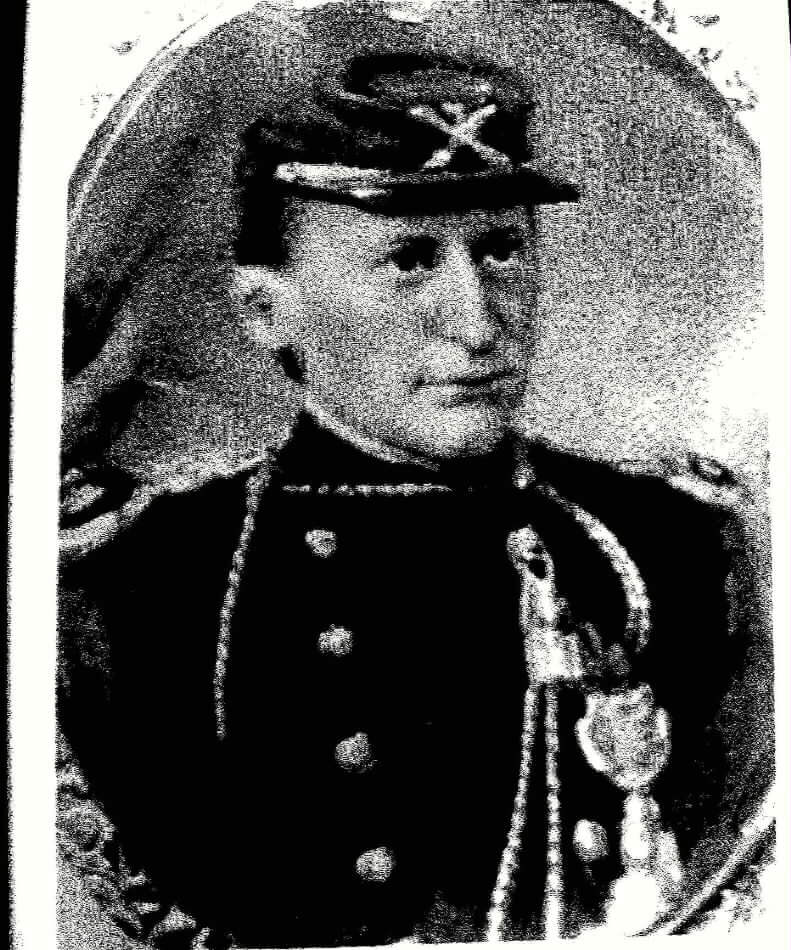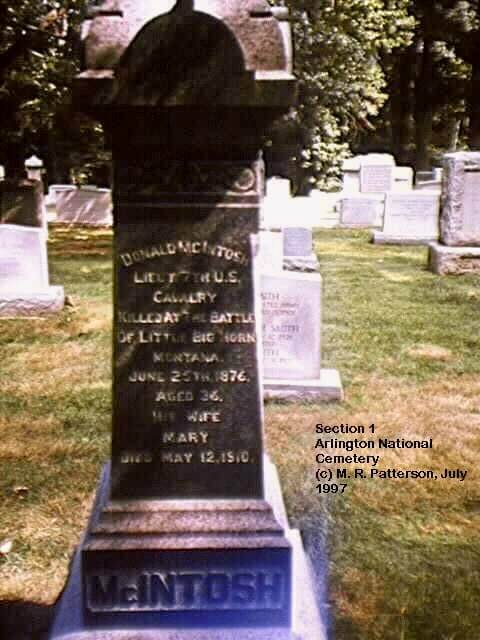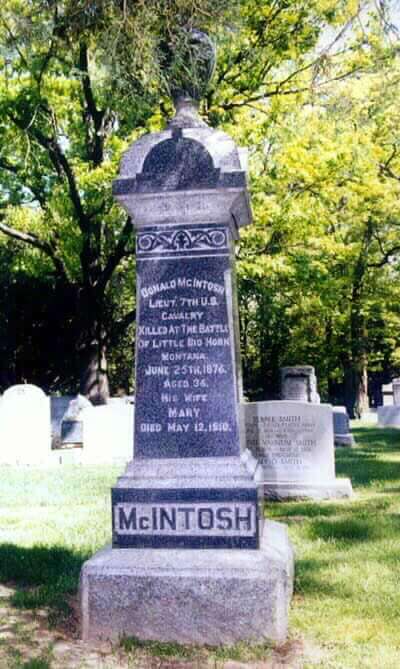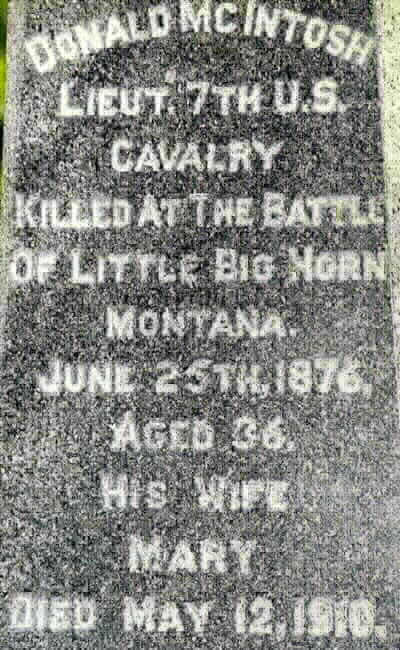Donald McIntosh (September 4, 1838 – June 25, 1876) was an officer in the U.S. 7th Cavalry Regiment who was killed at the Battle of Little Big Horn in the Montana Territory.
McIntosh was born in Montreal, Quebec in Canada, the son of James (John) and Charlotte Robinson McIntosh (she was a direct descendant of Red Jacket, a chief of the Six Nations). His father, part of the famed Hudson Bay Company, was killed by Indians when Donald was 14. Young McIntosh lived in various posts of the Hudson Bay Company and later in Fort Vancouver, Washington before moving to Oregon City in 1851 and Portland, Oregon in 1854.
During the American Civil War, he was chief clerk for Brig. Gen. Daniel Rucker. McIntosh married Mary (Molly) Garrett on October 30, 1866 in Baltimore, Maryland. He was appointed as Second Lieutenant, 7th U. S. Cavalry, on August 17, 1867, and was promoted to First Lieutenant on March 22, 1870. In the absence of the company commander, Custer assigned McIntosh to command Company G for the 1876 summer expedition from Fort Abraham Lincoln.
During the early stages of the fight along the Little Big Horn River, Major Marcus Reno took three companies of cavalry and swung through the river valley in an effort to attack the Indian village, while Custer headed off to attack the sprawling camp from the rear. Reno’s attack met with initial resistance, and he ordered his troops to dismount and form a skirmish line across the valley flats for about 15 minutes. Not making any headway, he retreated with his men into a stand of timber along the river, where they formed a defensive perimeter. Shortly after the sudden death of his scout Bloody Knife, Reno lost control of the tactical situation. He ordered a desperate withdrawal back across the river onto the bluffs. G Company was among the last to leave the timber. Indians knocked McIntosh from his horse and quickly killed him. His badly mutilated body was recovered two days later when a relief column arrived.
His body was originally buried where he fell. They were exhumed in July of 1877 and re-interred the following month in Fort Leavenworth National Cemetery. In 1909, the remains were disinterred and shipped to Arlington National Cemetery for permanent burial in Section 1. His widow received a pension of $30 per month until her death on May 12, 1910, when she was buried with him. McIntosh’s brother-in-law, Francis M. Gibson (who survived the Little Big Horn fight) is buried nearby.
Company Commander, Company G, 7th United States Cavalry, he was killed-in-action while serving with Lieutenant Colonel (Brevet Major General) George Armstrong Custer at the Battle of the Little Bighorn on June 25, 1876.
He was originally buried at the site of the battle, but was disinterred in 1877 and shipped to Arlington National Cemetery for permanent burial in Section 1.
His wife, Mary McIntosh, is buried with him.
In the summer of 1995, a finger bone with a ring was dug up on the site of Reno’s battle near McIntosh’s memorial marker. The ring was identified as McIntosh’s wedding band by the inscribed initials of the slain officer and his wife, and the date of their wedding. It now is in a private museum in Garryowen, Montana.
MCINTOSH, DONALD
1ST/LT 7TH US CAV
- DATE OF DEATH: 06/25/1876
- BURIED AT: SITE 107-D
- ARLINGTON NATIONAL CEMETERY
MCINTOSH, MARY W/O DONALD
- DATE OF DEATH: 05/12/1910
- DATE OF INTERMENT: Unknown
- BURIED AT: SECTION W.DIV SITE 107D
- ARLINGTON NATIONAL CEMETERY
- WIFE OF DONALD MCINTOSH LT 7TH US CAV
NOTE: His brother-in-law, Francis Marion Gibson, Captain, United States Army, is also buried nearly in Arlington National Cemetery.
Donald McIntosh of Canada
Second Lieutenant, 7th U. S. Cavalry, 17 August 1867
First Lieutenant, 22 March 1870
Killed 25 June 1876 in action with Sioux Indians at Little Big Horn River, Montana
Michael Robert Patterson was born in Arlington and is the son of a former officer of the US Army. So it was no wonder that sooner or later his interests drew him to American history and especially to American military history. Many of his articles can be found on renowned portals like the New York Times, Washingtonpost or Wikipedia.
Reviewed by: Michael Howard




